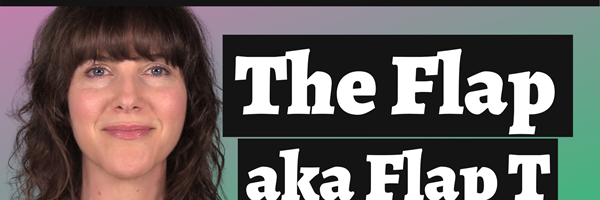(Video Transcript)
Hi, I’m Julie with San Diego Voice and Accent, and in this video you’ll learn how to link words together using the D sound.
The D /d/ consonant
The D consonant is called a stop consonant. This means that the airflow is stopped somewhere along the vocal tract - somewhere between the vocal cords and the lips. For the D consonant, the airflow is stopped at the alveolar ridge - the bumpy place on the roof of the mouth, just behind the front teeth. This is where the tongue tip touches when you say the D consonant.
D
D
D
Stop consonants, like the D sound, are unique in American English because there are many ways that they can be pronounced, depending on the context. In this video, I want to talk about one of the ways in which the D consonant can change when it occurs at the end of a word.
Released D /d/
Let’s use the word had, as in I had to do it. When native speakers say the word had by itself, they are likely to pronounce it very clearly, like you would find in a dictionary.
Had
Had
Had
Notice that the D in had was released, meaning the tongue tip came up to the alveolar ridge to make the D sound, and then the tongue tip came down. Watch my tongue as I say the word had.
Had
Had
Had
This type of D sound is called a released D. This is probably the way that you learned how to pronounce the D consonant. Tongue tip comes up, then comes down.
D
D
D
Unreleased D /d/
However, the D consonant is not always released, especially when it comes at the end of a word and the next word begins with a consonant, and especially a stop consonant. In this case, the D sound will almost always be unreleased. This means the tongue tip comes up to the alveolar ridge, and then it stays there - there isn’t a release of the tongue. The tongue tip stays up for the D, and then you transition directly to the next consonant. Let me give you an example using the word had.
I had to.
What did my tongue do when I pronounced the D in had? Watch again.
I had to.
The D was unreleased - my tongue tip stayed up at the alveolar ridge. Here it is again, and I’ll pause when I say the D sound.
I hadddddd to.
I hadddddd to.
DD, DDD, DDDD
That’s what the D sounds like in this context.
DDD
DDD
DDD
I hadddddd to.
This type of unreleased D can occur between words, like in I had to, and less often it can occur at the end of a sentence or thought group, as in, That was sad.
The D sound in sad was unreleased. Listen again.
That was sad.
When the D sound comes at the end of a sentence or thought group, it is up to the speaker to decide if they want to use an unreleased D or a released D.
Here’s what it sounds like with an unreleased D.
That was sad.
And here it is with a released D.
That was sad.
Sad.
Sad.
Practice: Linking with unreleased D
Let’s practice using an unreleased D to link two words together, and in these examples, the next word is going to begin with a consonant.
I’ll say each phrase three times, and I want you to repeat in the pauses. Then I’ll use the phrase in a sentence.
Glad she
I’m glad she came home.
Good night
Good night everyone!
Mad cat
He’s a very mad cat.
Had lunch
We had lunch at 1 o’clock.
Hard test
The teacher gave us a hard test.
I hope this video helped you to understand how to link words together with the D consonant. Thanks for watching! And I'd love to hear from you - contact me to learn how we can work together to perfect your American English pronunciation!



